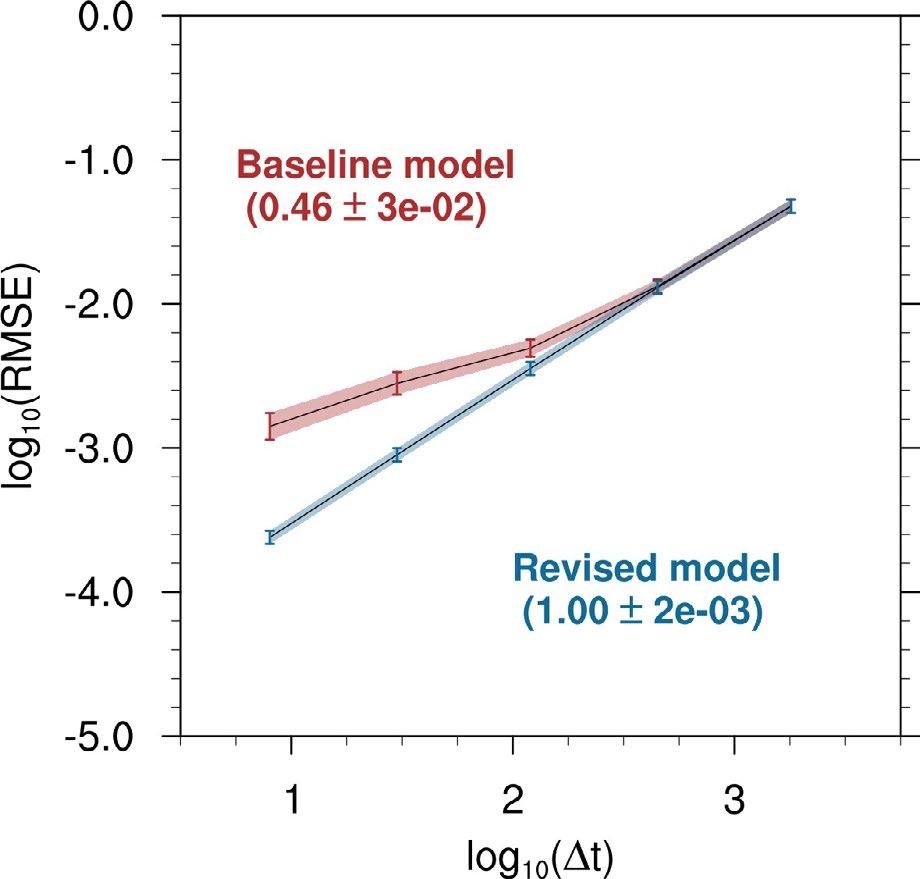BER-ASCR SciDAC work featured in GEWEX

Global Energy and Water EXchanges (GEWEX) program’s quarterly newsletter
A BER-ASCR collaborative SciDAC project had been featured in the Global Energy and Water EXchanges (GEWEX) program’s quarterly newsletter for “New Efforts in Improving Numerical Aspects of Atmospheric Physics Parametrizations”.
Development of atmospheric physics parameterizations often focused on structural errors and their dependency on spatial resolution. Much less attention had been paid to the time integration algorithms used for individual processes and for process coupling. An earlier work supported by SciDAC-3 (2011-2016) proposed to consider slow time-step convergence as an indicator of numerical issues in parameterizations, but questions were raised whether it was meaningful and practical to expect theoretically-predicted convergence rates given the empirical and pragmatic nature of parameterizations.

Figure 1. Global mean, mass-weighted time integration error in air temperature (y-axis) and solution self-convergence rate (numbers in parentheses showing mean ± one standard deviation) in 1-hour simulations carried out with different time-step sizes (x-axis) using a simplified global model with a dynamical core and a large-scale condensation parameterization.
Recent work from a SciDAC-4 collaboration (2017-2022) used E3SM’s hydrostatic atmospheric dynamical core and a simplified cloud parameterization to demonstrate that slow self-convergence (Fig. 1, red) can be traced to nonphysical behaviors in the numerical simulations; the pathologies can be addressed at their roots by revisiting the physical concept, employing rigorous mathematical derivations to avoid inadvertent oversimplification, and carefully choosing numerical methods (Fig. 1, blue). It was also demonstrated that code changes aimed at improving solution convergence in short, simplified model simulations can have systematic impacts on the long-term mean climate simulated by a full-fledged climate model. The work has motivated the interdisciplinary team to continue their collaboration and address numerical issues in the sophisticated parameterizations in E3SM.
For more details, see pages 9-10 of the GEWEX Quarterly Newsletter.
This article is a part of the E3SM “Floating Points” Newsletter, to read the full Newsletter check:


